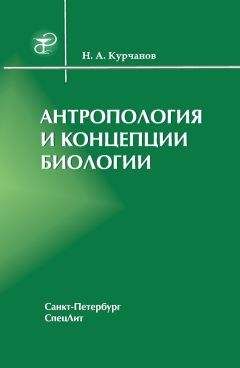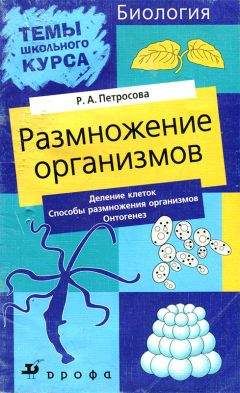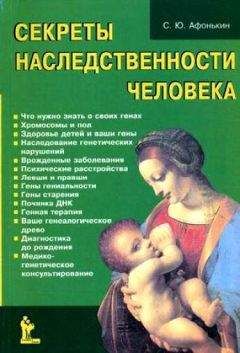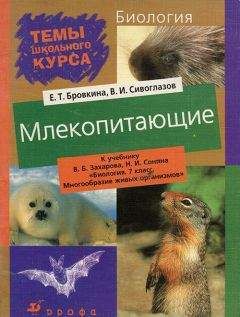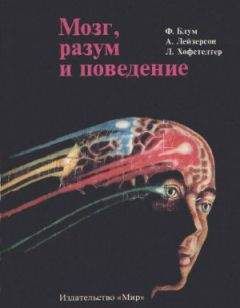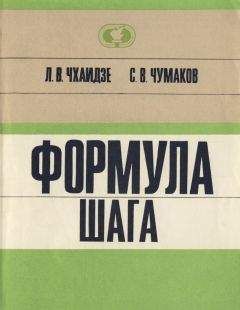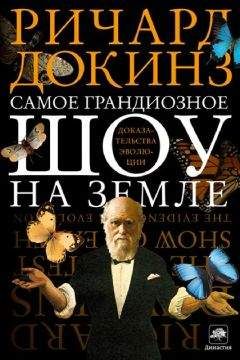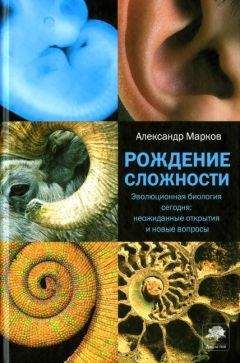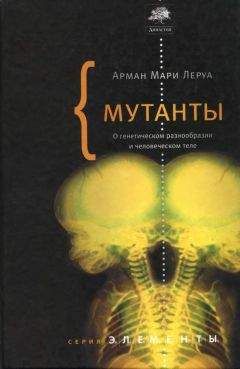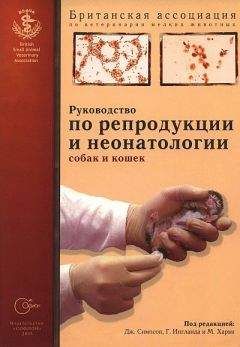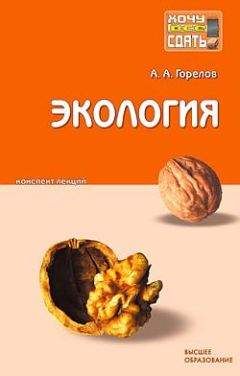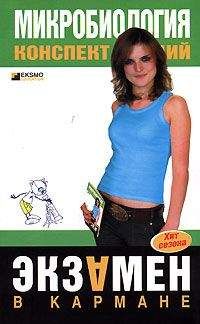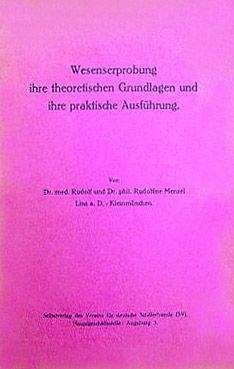Юрий Александров - Основы психофизиологии - Александров Ю.И. (ред.)
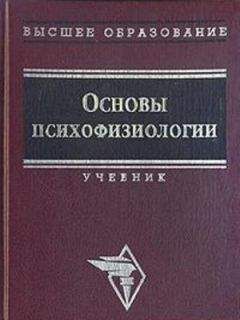
Скачивание начинается... Если скачивание не началось автоматически, пожалуйста нажмите на эту ссылку.
Жалоба
Напишите нам, и мы в срочном порядке примем меры.
Описание книги "Основы психофизиологии - Александров Ю.И. (ред.)"
Описание и краткое содержание "Основы психофизиологии - Александров Ю.И. (ред.)" читать бесплатно онлайн.
В учебнике «Основы психофизиологии» раскрыты все темы, составляющие в соответствии с Государственным образовательным стандартом высшего профессионального образования содержание курса по психофизиологии, и дополнительно те вопросы, которые представляют собой «точки роста» и привлекают значительное внимание исследователей. В учебнике описаны основные методологические подходы и методы, разработанные как в отечественной, так и в зарубежной психофизиологии, последние достижения этой науки.
Настоящий учебник, который отражает современное состояние психофизиологии во всей её полноте, предназначен студентам, аспирантам, научным сотрудникам, а также всем тем, кто интересуется методологией науки, психологией, психофизиологией, нейронауками, методами и результатами объективного изучения психики.
504. Mangan G.L. The biology of human conduct: East-West models of temperament and personality. Oxford: Pergamon. 1982.
505. Mangina C.A. Developmental psychophysiology of learning abilities and disabilities: effective diagnosis and treatment. //Inter. Journ. Psychophysiol. 1989. V. 7. № 2-4. P. 305.
506. Markowitsch H. The amygdala,s contribution to memory – a study on two patients with Urbach-Wiethe disease //Neuroreport 1994. V. 5. № 11. P. 1349.
507. Marshall J.C., Halligan P. W. Seeing the forest but only half the trees? // Nature. 1995. V. 373. № 6514. P. 521.
508. McGaugh J.L., Gold P. E. Modulation of memory by electrical stimulation of the brain //Neural mechanisms in learning and memory. Cambridge. Mass. 1976. P. 46.
509. McGinnies E. Emotionality and perceptual defence //Psychol. Rev. 1949. V. 56. P.244.
510. McGlinchey-Beroth R., Milberg W., Verfaellie M., Alexander M., Kilduff P. Semantic processing in the neglect field: evidence from a lexical decision task//Cogn. Neuropsych. 1993. V. 10. № 1. P. 79.
511. McLean P. D. Cerebral evolution of Emotion //Handbook of emotion. 1993. P. 67.
512. Metherate R., Asht J.H. Nucleus basal stimulation fasilitates thalamocortical synaptic transmission in the rat auditory cortex //Synapse. 1993. V. 14. P.132.
513. Milberg W.P., McGlinchey-Berroth R., Grande L. Comparison of cross-field matching and forced-choice identification in hemispatial neglect // Neuropsychology. 1995. V. 9. № 4. P. 427.
514. Miller G.A. The magical number seven, plus or minus two: Some limits in our capacity for processing information //Psychol. Rev. 1956. V. 63. P. 81.
515. Miller R.R., Misanin J.R., Levis D.J. Amnesia as function of events during the learning - ECS interval //Journ.Сотр. Physiol. Psychol. 1969. V. 67. P. 145.
516. Milner В . Frontal lobe contributions to memory processes //Abstr. XXXII Congr. Intern. Union Physiol.Sci. Glazgov. 1993. P. 73.
517. Mishkin M. What is recognition memory and what neural circuits are involved? //Abstr. XXXII CongrJntern. Union Physiol.Sci. Glazgov. 1993. P. 42.
518. Mishkin M., Horn G., Schacter D. Cerebral memory systems //Third IBRO Congress of Neuroscience. Montreal, Canada. 1991. Abstracts. S19. P. 4.
519. Moray N. Attention: selective processes in vision and hearing. Hutchinson educational LTD. N-Y. 1969.
520. Moruzzi G. Summary statement//Progr.Brain Res. Sleep Mechanisms. 1965. V. 18. P.241.
521. Moruzzi G., Magoun H. Brain stem reticular formation and activation of the EEG. //EEG f. Clin. Neurophysiol.l949.V. 1. P. 455.
522. Munk M.H.J., Roelfsema P. R., Konig P., Engtl F.K., Singer W. Role of reticular activation in the modulation of intracortical synchronization / /Science, 1996. V. 272. P. 271.
523. Munson R., Ruchkin D.S., Ritter W., Sutton S., Squires N. The relation of P3b to prior events and future behavior //Biological Psychology. 1984. V. 19. № l.P. 1.
524. MurthyV. N., Fetz E.E. Coherent 25-35 Gz oscillations in the sensorimotor cortex of the awake behaving monkeys //Proc. natn. Acad.Sci.U.S.A. 1992. V.89. P.5670.
525. Naatanen R., Michie P. T. Different variants of endogenous negative brain potentials in performance situation: a review and classification //Human evoked potentials. N.Y.: Plenum publ.Corp., 1979. P. 252.
526. Naatanen R., Paavilainen P., Tiitinen H., Jiang D. and Alho K. Attention and mismatch negativity//Psychophysiology. 1993. V. 30. P. 436.
527. Norman D.A. Memory and Attention. An introduction to human information processing., N.Y., ets: John Wiley Sons, Inc. 1969.
528. Nunez A., Amzica F., Steriade M. Voltage-dependent fast (20-40 Hz) oscillations in long-axoned neocortical neurons //Neuroscience. 1992. У.51.№1.Р.7.
529. O'Keefe J.A review of the hippocampal place cells //Progr/ Neurobiol.1979. V. 13 № 4. P. 419.
530. Oomura Y., Yoshimatsu H., Aou S. Medial preoptic and hypothalamic neuronal activity auring sexual behavior of the small monkey //Brain Research 1983V. 266 P. 340-341.
531. Orebeke J. Personality dimensions and arousal. Book review //Psychophysiology. 1988. V. 25. № 6. P. 718.
532. Parent M. Spared retention of inhibitory avoudance learning after posttraining amygdala lesions //Behav. Neurosci. 1995. V. 109. № 4. P. 803.
533. Pavlides С ., Winson J. Influences of Hippocampal Place Cell Firing in Awake State on the Activity of These Cells During Subsequent Sleep Episodes //Journ.Neurosci., 1989. V. 9. № 8. P. 2907.
534. Pavlygina R.A. The dominant and the conditioned reflex //Soviet. Scient. Reviews. Section F. V. 5. Part 1. Harward Acad. Rubl. 1991. P. 37.
535. Pavlygina R.A. Reinforcement as discontinuation of a motivational dominant //Systems Research in Physiology. V. 4. Amsterdam: Gordon and Breach.
536. Pavlygina R., Trush V., Mikhailova N., Simonov P. Self-stimulation by direct current as a model for studing mechanisms of motivated behavior //Acta NeurobioI.Exp. 1976. V. 36. № 6. P. 725.
537. Perrett D.I., Rolls E.T., Caan W. Visual neurons responsive to faces in the monkey temporal cortex //Exptl. Brain Res. 1982. V. 47. P. 329.
538. Perrett D.I., Oram M.W., Lorincz E., Emery N.E., Baker C. Monitoring social signals arising from the face: studies of brain cells and behaviour / /8th world congress of IOP. Tampere. 1996. P. 201.
539. Picton T.W., Campbell K.B., Baribeau-Braun J., Proulx G.B. The neurophysiology of human attention: a tutorial review. //Attention and performance VII. Lawrence eribaum associates, Publishers: Hillsdale, New Jersey, 1978. P. 429.
540. Picton T.W., Stuss D.T. The component structure of the human event-related potentials //Progress in Brain research. Amsterdam: Elsevier. 1980. V. 54: Motivation, motor and sensory processes of the brain: electrical potentials, behavior and clinical use. P. 17.
541. Pieron H. La sensation. Paris: Presse univ. France. 1960.
542. Pinault D., Deschenes M. Voltage-dependent 40-Hz oscillations in rat reticular thalamic neurons in vivo //Neuroscience. 1992. V. 51. № 2. P. 245.
543. Popper K.R., Eccles J .C. The self and its brain. Berlin: Springer. 1977. P. 598.
544. Posner M.I., Rothbart M.K. Constructing neuronal theories of mind // High Level Neuronal Theories of the Brain. Cambridge, Mass.: MIT Press. 1994. P. 183.
545. Povinelli D., Preuss T. Theory of mind: evolutionary history of a cognitive specialization //Trends Neurosci. 1995 V. 18. № 9. P. 418.
546. Pritchard W.S. Psychophysiology of P300 //Psychol. Bull. 1981. V. 89. P. 506.
547. Psychophysiological Brain Research. Tilburg: Tilburg University Press. 1990. V. 1. V. 2.
548. Rakic P. A small step for the cell, a giant leap for mankind: a hypothesis of neocortical expansion during evolution //Trends Neurosci. 1995 V. 18. № 9 383.
549. Ranck J. B. Behavioral correlates and firing repertoires of neurons in the dorsal hippocampal formation and septum of unrestrained rats // Hippocampus. 1975. V. 2. P. 207.
550. Rauschecker J.P. Compensatory plasticity and sensory substitution in the cerebral cortex//TINS. 1995. V. 18. P. 36.
551. Reed E.S. Neural regulation of adaptive behavior //Ecological Psychology. 1993. V. 1. P. 97.
552. Reed E.S. Encountering the world: towards an ecological psychology. Oxford Univ. Press, 1995
553. Remington R. J. Analysis of sequential effects in choice reaction times // Joum.Experim.Psychol. 1969. V. 82. P. 250.
554. Ribary U., Llinas R., Lado F., Mogilner A., Lopez L. Coherent 40-Hz responses during auditory processing in the human brain. //Soc. Neurosci. Adstr.l991.V-17. P. 1582.
555. Rime B. Les theories des emotions //Cah.psychol.cognitive. 1984. V. 4. № 1. P. 5.
556. Ritter W., Ford J.M., Gaillard A.W.K., Harter M.R., Kutas M., Naatanen R., Polich J., Renault B. and Rohrbaugh J. Relation of negative potentials and cognitive processes //Brain and information: event-related potentials. Ann.N.Y. Acad. Sci.: 1984. V. 425. P. 24.
557. Rockstroh В ., Elbert Т ., Birbaumer N., Lutzenberger W. Slow brain potentials and behavior. Bait..Munich: Urban and Schwarzenberg. 1982.
558. Roelfsema P. R., Engel A.K., Konig P., Singer W. Visuornotor integration is associated with zero time-lag synchronization among cortical areas // Nature. 1997. V. 385. P. 157.
559. Rohrbaugh J.W., Parasuraman R., Johnson R., Jr. Event-related brain potentials: Basic issues and applications //New York: Oxford University Press, 1990.
560. Rolls E. Т . Information representation, processing and storage in the brain: analysis at the single neuron level //The neuronal and molecular bases of learning. N.Y.: John Wiley Sons. 1987. P. 503.
561. Saad W. Effect of nicotinic stimulation of the amygdaloid complex on water and sodium chloride intake //Rev. cienc. biomed. 1995. V. 15. P. 41.
562. Salmelin R., Hari R., Lounasman O.V., Sams M. Dynamics of brain activation during picture naming //Nature. 1994.V. 368.N 6470.P. 463.
563. Sato A., Sato Y. Regulation of regional cerebral blood How by cholinergic fibers originating in the basal forebrain //Neurosci Res. 1992. V. 14."P. 242.
564. Schacter D.L., Tulving E. What are the memory systems of 1994? //Memory systems 1994. London: A Bradford Book. 1994. P. 2.
565. Schwartz J.H., Castellucci V. F., Kandel E.R. Function of identified neurones and synapses in abdominal ganglion ofAplysia in absence of protein synthesis //Journ.Neurophysiol. 1971. V. 34. P. 939.
566. Semin G.R. On the relationships between representation of theories in psychology and ordinary language //Current Issues in European Social Psychol. Cambridge. 1987. P. 114.
567. Sharpless S., Jasper H. Habituation of the arousal reaction //Brain. 1956. V. 79. P. 655.
568. Shvyrkov V. В . Behavioral specialization of neurons and system-selection hypothesis of learning //Human memory and cognitive capabilities. Amsterdam: Elsevier. 1986. P. 599.
569. Siegfried В ., Netto C.A., Izquierdo, I. Exposure to novelty induces naltrexone-reversible analgesia in rats //Behavioral Neuroscience, 1987. V. 101. P. 436-438.
570. Simonov P. Parameters of action and measuring emotions //Emotions: Their Parameters and Measurement. New York: Raven Press. 1975. 421 p.
571. Simonov P. The need-informational theory of emotions //Intern. Journ. Psychophysiol. 1984. V. 1. № 3. P. 277.
572. Simonov P. The Emotional Brain. New York-London: Plenum Press. 1986. P. 267.
573. Smith S.M., Brown H., Toman Y., Goodman J.S. Lack of cerebral effects of D-tubocurarine//Anesthesiology. 1947. V. 8. P. 1.
574. Snyder P., Scott J. The psychophysiology of sleep. Handbook of Psycho-physiology. N.Y.; Hott. 1972.
575. Sokolov E.N. Foreword //of R. Naatanen. Attention and brain function. XI–XV. Lawrence Eribaum Associates, Inc., Publishers. Hillsdale, New Jersey. 1992. 494 p.
576. Sokolov E.N. Vector coding in neuronal nets: color vision //Brain and self organisation. Hillsdale: Lawrence Eribaum Ass.Publ. 1994. P. 463.
577. Sperry R.W. Perception in the absence of the neocortical commisures // Pwerception and its disorders. Balfltimore: William Wilkins. 1970. P.123.
578. Spinelly D.N. OCCAM: A computer model for a content addressible memory in the central nervous system //The biology of memory. N.Y. – London. Acad. Press. 1970. P. 293.
579. Spinelly D.N. Neural correlates of visual experience in single units of cats visual and somatosensory cortex //Frontiers in visual science. N.Y. Springer. 1978. P.674.
580. Squire L.R. The biology of memory. Verlag. 1990.
581. Squire L.R. Declarative and nondeclarative memory: multiple brain systems supporting learning and memory / /Memory systems 1994. London: A Bradford Book.1994. P.203.
582. Squires N.K., Halgren E., Wilsin Ch., Crandall P. Human endogenous limbic potentials: cross-modality and depth/surface comparisons in epileptic subjects //Tutorials in event-potentials research: endogenous components. Amsterdam: North-Holland Publ. Company, 1983. P. 217.
583. Steriade M. Arousal: revisiting the reticular activating system //Science. 1996. V. 272. P. 225.
584. Steriade M., Datta S., Pare D., Oakson G., Dossi R.C. Neuronal activities in brainstem cholinergic nuclea related to tonic activation processes in thalamocortical systems // Journ.Neurosci. 1990. V. 10. P. 2541.
585. Steriade M., Dossi R.C., Pare D., Oakson G. Fast oscillations (20–40 Hz) in thalamocortical systems and their potentiation by mesopontine cholinergic nuclei in the cat //Proc. natn. Acad. Sci. U.S.A. 1991. V. 88. P. 4396.
586. Steriade M., Dossi R.C., Contreras D. Electrophysiological properties of intralaminar thalamocortical cells discharging rhythmic (40 Hz) spike-bursts at 1000 Hz during waking and rapid eye movement sleep // Neuroscience. 1993. V. 56. № 1. P. 1.
587. Sternberg R. Implicit theories of intelligence //Journ.Personal, and Social Psychol.l985.V-49. P. 607.
588. Sternberg S. Memory scanning: memory processes revealed by reaction time experiments //American scientist. 1969. V. 57. № 4. P. 421.
589. Stoerig P., Brandt S. The visual system and levels of perception: properties of neuromental organization //Theoretical Medicine. 1993. V. 14. № 2. P. 117.
590. Strelau J. Temperament-personality-activity. London: Acad.Press. 1983.
591. Strelau J., Angleitner A., Bantelmann J., Ruch W. The Temperament Inventory-Revised (STI-R): Theoretical considerations and scale development //Europ.Journ.Personality. 1990. V. 4. P. 209.
Подписывайтесь на наши страницы в социальных сетях.
Будьте в курсе последних книжных новинок, комментируйте, обсуждайте. Мы ждём Вас!
Похожие книги на "Основы психофизиологии - Александров Ю.И. (ред.)"
Книги похожие на "Основы психофизиологии - Александров Ю.И. (ред.)" читать онлайн или скачать бесплатно полные версии.
Мы рекомендуем Вам зарегистрироваться либо войти на сайт под своим именем.
Отзывы о "Юрий Александров - Основы психофизиологии - Александров Ю.И. (ред.)"
Отзывы читателей о книге "Основы психофизиологии - Александров Ю.И. (ред.)", комментарии и мнения людей о произведении.






